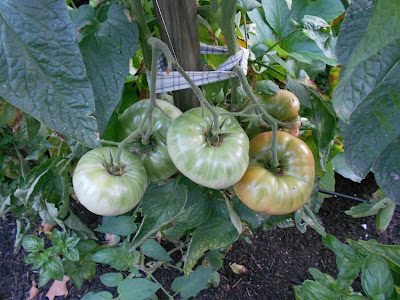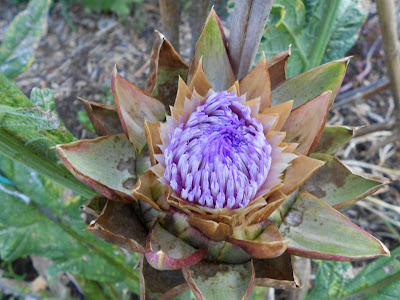I have grown potatoes for several years. Or I should say potatoes have been growing in my garden for several years, as both a white and a purple potato come back every year from potatoes that I have missed, yet overwinter to grow on in the spring. There have never been good yields, and the potatoes have often had small little bug holes. Not a crop that has showered me with great harvests. So I was a bit surprised when a gardening and fish keeping friend, Lee Harper, stated that his most successful crop was potatoes.
That statement started me to wonder if maybe I should give potatoes one last real try before giving up on them. Early this spring, Lee said that he was going to buy seed potatoes, and would buy some for me. So now, I could try one last time, using magic seed potatoes. Lee said he puts in about five pounds, so I figured, what the heck, I will try two pounds. He proceeded to buy me two pounds, I paid him the $1.50 total cost of my purchase, and took possession of my FOUR lovely Kennebec potatoes. Four. Well it was only an experiment without high expectations.
It was "too this" or "too that" for me to plant them right away, so the potatoes sat around for probably ten days before I finally cut then into pieces of about one inch square. The mother potatoes were eyed up nicely, so each little cube potato had at least one eye. I had read that you are supposed to let the pieces harden up the cuts before planting, so I put them aside in the shade for awhile. And then a little while more. Probably a little more than a little while, more like three days. Enough time to shrivel them up, but the cut places were certainly dry.
When I finally did get around to planting the eyed pieces, I hoed a shallow two inch deep trench down the middle of a three foot wide bed. Put in the pieces about four inches apart from each other. Covered them. Then waited. Waited some more. Meanwhile the overwintered potatoes had done it again, and I was getting potato plants in two other parts of the garden. Finally after a couple of weeks, I spotted a Kennebec sprout, then another and another. I piled some leaf mold around the plants when they were about one foot tall, and had great intentions of piling on more leaf mold as the plants got bigger. Never happened. They did get bigger, and overran my path. As a matter of fact, the plants looked to be about twice as big as the volunteer plants.
 |
| Kennebec potato patch, July 19th, 2012 |
A combination of factors made me decide to harvest the patch yesterday. One, it was looking pretty scraggly. Two, it had covered the path that you can see at the top of the photo. Three, I did not want the voles to get more potatoes than I got. And four, I just couldn't wait any longer to see what was down there.
I started harvesting by just pulling up the plants. Eureka! Real potatoes. Potatoes that actually look like potatoes. In the first couple of pulls, I find three potatoes chomped by voles, but I have more than they have. The harvest broke down like this:
 |
| Three for the voles |
These are the little potatoes that probably would have enjoyed some more growing time had I been more patient. Looks like a nice bunch for frying in butter with some fresh sweet peppers for breakfast.
This is the pile of potatoes that I had to work for, digging up the patch with a dull hoe while trying not to slice potatoes. Worked up quite a sweat. But when added to the potatoes that came up easily while pulling the plants, it resulted in a great harvest:
Thank you Lee Harper. I would like to put in my order now for seed potatoes for next spring. Maybe four pounds. And yes, the overwintered volunteer potatoes are still pretty scrawny. Only the good seed will be allowed to grow next year.
I moved the potatoes down to the basement where it is a little cooler and they will be out of the sunlight. There were six more potatoes, but they have been taste tested. And passed with flying colors. All in all, a good return from a start of four seed potatoes.





















































